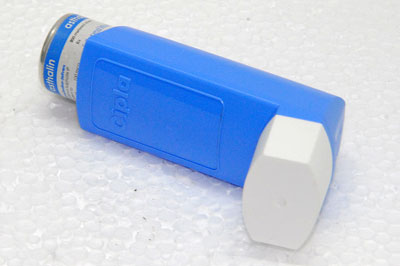-


-

- EXERCISE & ASTHMALIFESTYLE ADVISORY
-
It is a reactive airway disease characterized by shortness of breath, coughing and wheezing. This is due to constriction of the smooth muscle around the airways, a swelling of the mucosal cells and increased secretion of mucus. The inflammation in the airways makes the airways smaller, making breathing more difficult. When asthma symptoms become worse than usual, it is called an asthma attack. It can be caused by allergic reaction, exercise, infection, stress, or environmental irritants such as pollens, inhalants, cigarette smoke, and air pollution
BENEFITS
- Exercise improves the cardio vascular as well as the respiratory system.
- There is an improvement in the lung function.
- Decreases the fear of breathlessness. Exercise also improves the air flow and ventilator capacity.

CAUTION
Always follow the recommendations given by the treating physician- Only stable asthmatics should exercise
- Before beginning an exercise program, individuals with asthma must have a medication/ treatment plan
- They should have a bronchodilator inhaler with them
Exercise Induced Asthma (EIA):
EIA is characterized by moderate obstruction and is not life threatening. Approximately 80% of people with asthma experience asthma attacks during exercise. The severity of the attack is related to the intensity of exercise and the ventilatory requirement of the task. It occurs usually within the first 10 minutes of beginning and after finishing the workout session. Hence a prolonged warm up and cool down is essential
-
EXERCISE RECOMMENDATION
Exercises should be done under the supervision of a qualified person.
Type of exercise (Mode): Walking, cycling and swimming (inhalation of moist air just above the surface may be beneficial). Upper body exercises such as rowing and cross country skiing may not be appropriate because of high ventilatory demand. Strength training workout may also be undertaken depending upon the goal.
Frequency: At least 3 to 4 times a week. Individuals who experience shortness of breath early, may benefit from intermittent exercise (two 10 minute sessions).
Intensity: Low intensity based on the client’s fitness status. Clients can increase the load gradually during weight training activity.
Duration: Longer, more gradual warm up and cool down. Gradually increase total duration to 20 to 45 minutes

TIPS
- May use the inhaler before exercise to reduce the possibility of EIA
- Extended warm up and cool down
- To keep exercise intensity low initially and to gradually increase. Reduce intensity if symptoms occur
- To drink plenty of warm fluids
- Clients should avoid extremes of temperature and humidity
- Relaxation
- Deep breathing exercises
- Stop smoking